Review by Nora Kovacs in New York; Wednesday, Sep. 30, 2015
When it was first announced that musical artist Jamie XX, visual artist Olafur Eliasson, and choreographer Wayne McGregor would be coming together to collaborate on an adaptation of Jonathan Safran Foer’s book, Tree of Codes, the hype was expectedly huge. Contemporary art’s biggest names joining forces for one mega-oeuvre that transgresses any style, genre, or categorization? It seemed too good to be true and, frankly, I maintained a certain skepticism as I walked up the stairs of the Park Avenue Armory in New York City a couple of weeks ago to see if the show would be worth all the hype.
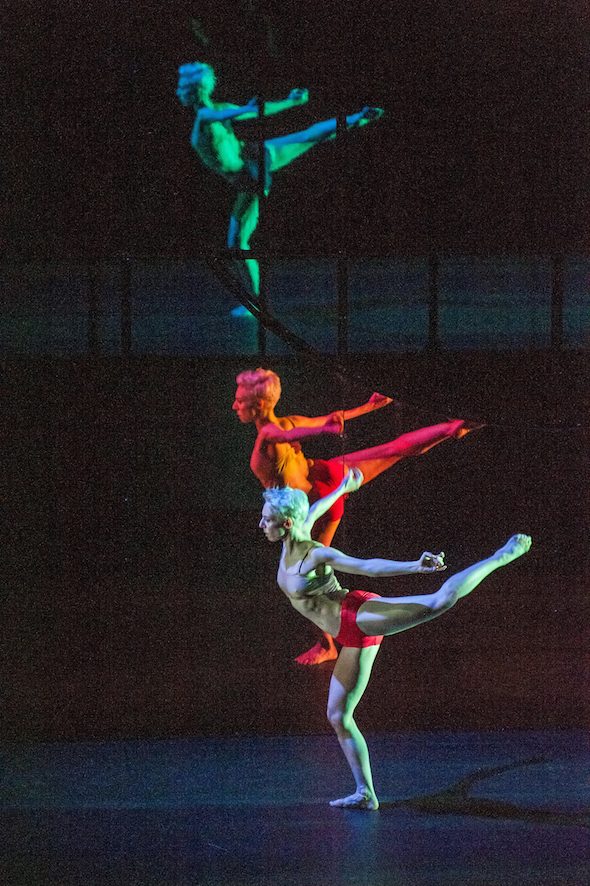
Tree of Codes at Park Avenue Armory, September 2015 // Photo by Stephanie Berger
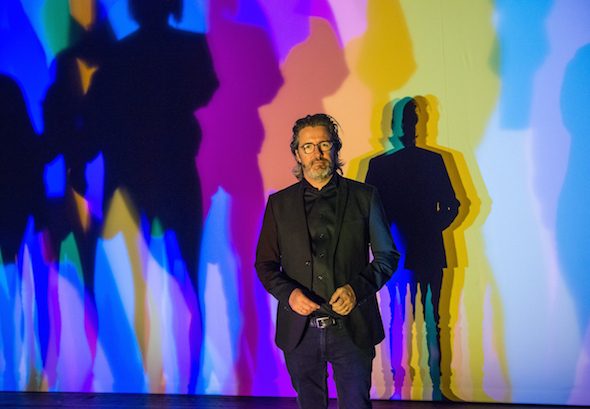
Olafur Eliasson at Tree of Codes, Park Avenue Armory, September 2015 // Photo by Stephanie Berger
There are many pieces to the puzzle that is Tree of Codes, from the book/artwork hybrid that inspired the piece to the dynamism between Jamie XX’s score and McGregor’s dance choreography to Eliasson’s vision for the space in which it is all performed. Each of the artists involved has established himself in his given field and area of expertise, thus the question was not whether the musical composition would be good enough or the choreography precise enough, but whether or not these renowned artists could shake the pressures and limitations of their reputations to create something organic, integral and fluid; something that would go beyond a star-studded lineup and a whole lot of online buzz.
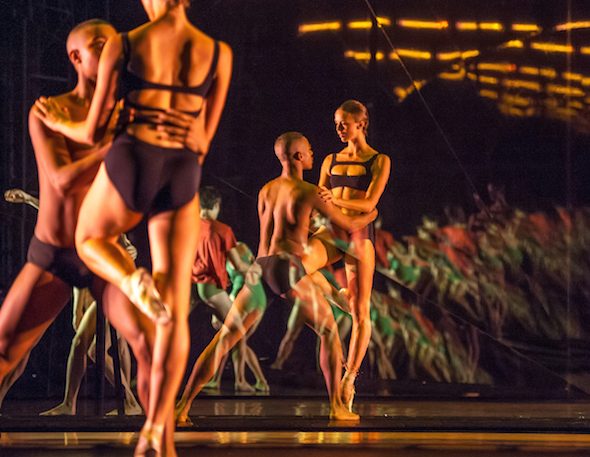
Tree of Codes at Park Avenue Armory, September 2015 // Photo by Stephanie Berger
For an easily distracted audience whose focus is increasingly mediated by the compulsive shuffling of simultaneous online feeds, this is a difficult task. Instead of trying to resist this flightiness, however, Tree of Codes seems to have placed it at the very heart of its performance. The show is, in many ways, a manifestation of that scanning, shuffling, and flipping-through of material, a fragmented feed of its own, except instead of fueling the compulsion to see what is next, Tree of Codes compels its audience to pause and take in their surroundings.
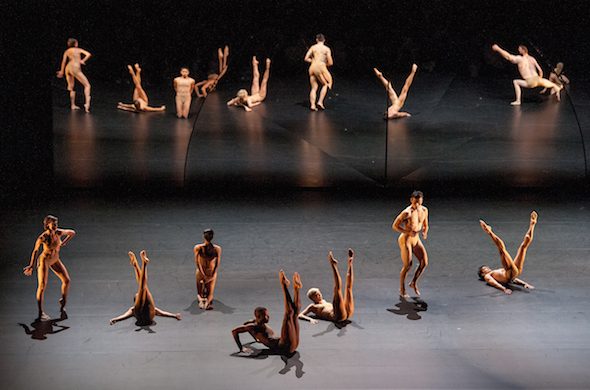
Tree of Codes at Park Avenue Armory, September 2015; Photo by Stephanie Berger
Upon entering the space at Park Avenue Armory, it is clear that the artists have opted for an unconventional ballet viewing experience. The main hall has been dressed entirely in black with a rectangular stage placed in the center and two luminescent screens on either end. Projected on each screen are the layered, rainbow silhouettes of human bodies, reminiscent of the colored aesthetic used on Jamie XX’s latest album, In Colour, which was released at the start of summer. As viewers gradually makes their way to their seats on the other side of the stage, their bodies are silhouetted against the screens as well.
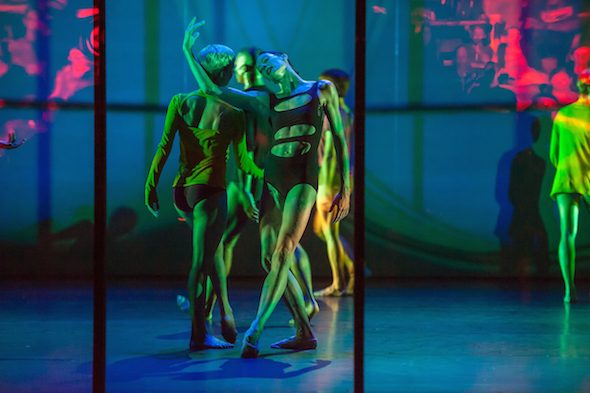
Tree of Codes at Park Avenue Armory, September 2015; Photo by Stephanie Berger
The space thus demands interaction, whether it be taking photos of oneself in front of the screens or awkwardly scuttling across so as not to “disturb” the set. It is rare that an audience has the ability to encircle a performance space in such a way, both surrounding and taking part in it and watching as others do the same. With all the seats on one side of the Armory hall, facing and looking down upon the central stage and screens, it becomes immediately clear that leaving the show early or arriving late are simply not options here. Tree of Codes has been placed before the audience as an epic novel, not to be skimmed, but to be read in its entirety, cover to cover.
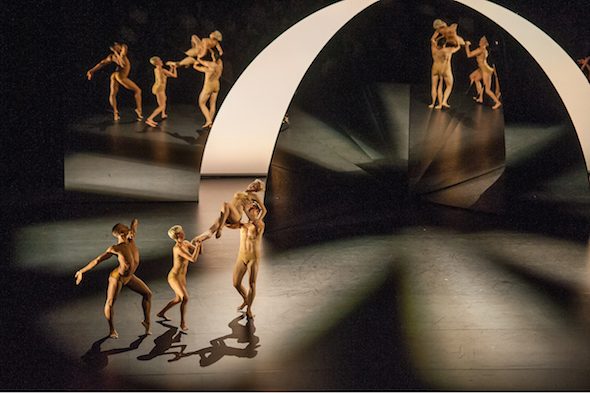
Tree of Codes at Park Avenue Armory, September 2015; Photo by Stephanie Berger
Jonathan Safran Foer’s 2010 work, Tree of Codes, was created by deconstructing another book, The Street of Crocodiles by Bruno Schulz. Foer cut holes in the pages and isolated passages and words, thus forming a new narrative of his own, and this fragmentation is clearly reflected in every aspect of the dance adaptation. The set itself is broken up into mirrors, projections, and rays of light, while the choreography is nonlinear and splintered, appearing in bursts of movement that run parallel to one another in one moment and then spontaneously intersect at another. Each dance segment, each song, each beam of light, and each bodily gesture seems to occur in a mathematical equation, of sorts, with one leading to another and to another until it all stops.
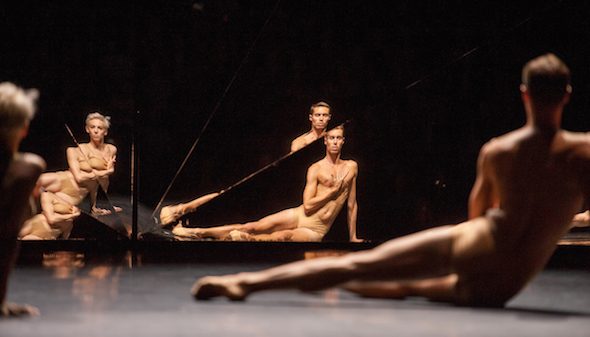
Tree of Codes at Park Avenue Armory, September 2015; Photo by Stephanie Berger
Foer’s poetry, Jamie XX’s ethereal composition, Eliasson’s cosmological set design and McGregor’s impeccable choreography are all to be admired in this unique, hybrid art form, but something that should not be overlooked in the midst of these big names is the raw talent of the Paris Opera Ballet. Tree of Codes may transfix its audience with all its converging stimuli and transport them to some beautiful, post-apocalyptic place, but an immense amount of credit must be given to the dancers themselves. Throughout the performance, I could not help but be resoundingly (and often painfully) aware of the sheer strength and power of their bodies. Whereas in most ballet performances, the dancers’ bodies become invisible, blending into the choreography and operating with a certain ease, Tree of Codes highlights the human quality of its performers. Their bodies have been rendered genderless, sexless, uniform beings, functioning only as amalgamations of various biological intricacies and muscular inner-workings. Each movement and muscle lays bare the amount of practice, training, and work that has gone into the final product and it is spellbinding to watch.
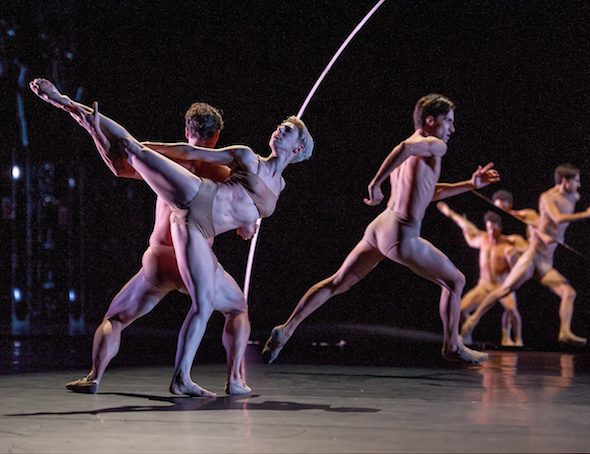
Tree of Codes at Park Avenue Armory, September 2015; Photo by Stephanie Berger
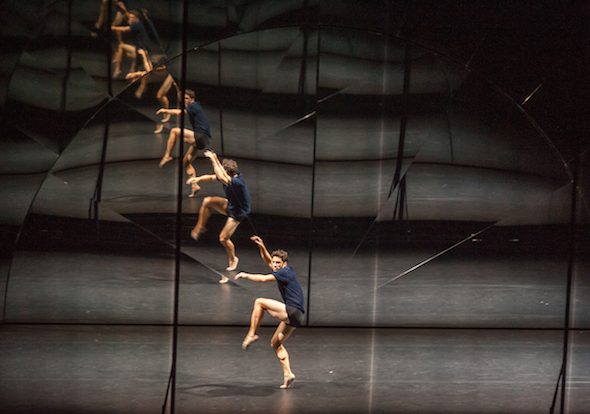
Tree of Codes at Park Avenue Armory, September 2015; Photo by Stephanie Berger
In the Guardian’s review of Tree of Codes, Judith Mackrell describes the show as “superficially spectacular rather than stirring”, but I think this statement misses the point. Tree of Codes is certainly a spectacle – that much can be gathered from a quick glance at the Facebook event – but it is aware of its celebrity and thus finds substance in the honesty of the bodies on stage. Just as they are living, breathing, dynamic creatures, the entire piece can be considered as one large organism, in which a multitude of systems and combinations function parallel to one another, but it is not until they come together in this space that life happens.
Additional Information
TREE OF CODES
Director and Choreographer: Wayne McGregor
Visual Concept: Olafur Eliasson
Composer: Jamie XX
Inspired by Tree of Codes by Jonathan Safran Foer
Paris Opera Ballet: Marie-Agnès Gillot, Jérémie Bélingard, Julien Meyzindi, Sébastien Bertaud, Lydie Vareilhes, Lucie Fenwick
Company Wayne McGregor: Catarina Carvalho, Travis Clausen-Knight, Alvaro Dule, Louis McMiller, Daniela Neugebauer, Anna Nowak, James Pett, Fukiko Takase, Jessica Wright























